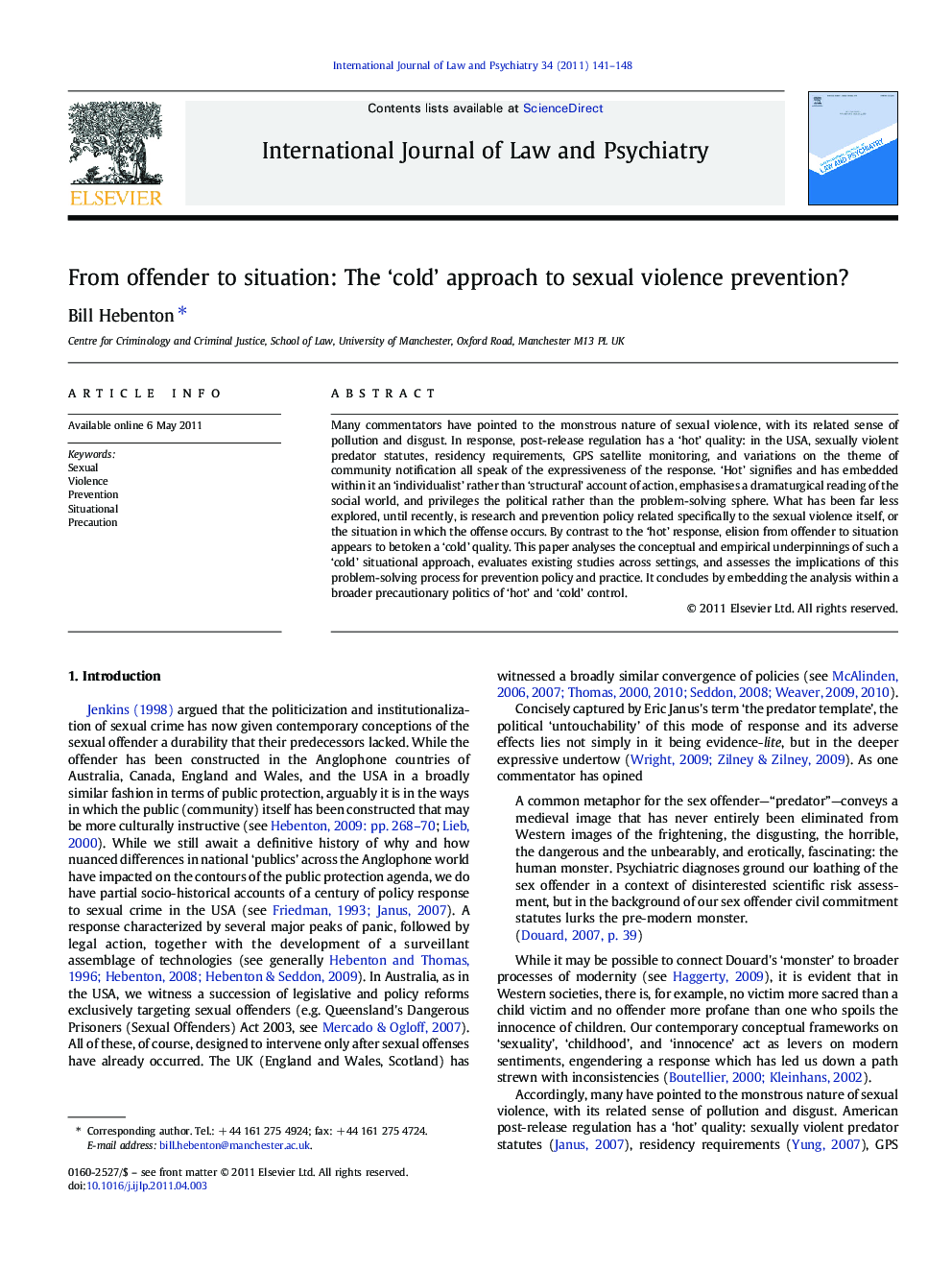| Article ID | Journal | Published Year | Pages | File Type |
|---|---|---|---|---|
| 100967 | International Journal of Law and Psychiatry | 2011 | 8 Pages |
Many commentators have pointed to the monstrous nature of sexual violence, with its related sense of pollution and disgust. In response, post-release regulation has a ‘hot’ quality: in the USA, sexually violent predator statutes, residency requirements, GPS satellite monitoring, and variations on the theme of community notification all speak of the expressiveness of the response. ‘Hot’ signifies and has embedded within it an ‘individualist’ rather than ‘structural’ account of action, emphasises a dramaturgical reading of the social world, and privileges the political rather than the problem-solving sphere. What has been far less explored, until recently, is research and prevention policy related specifically to the sexual violence itself, or the situation in which the offense occurs. By contrast to the ‘hot’ response, elision from offender to situation appears to betoken a ‘cold’ quality. This paper analyses the conceptual and empirical underpinnings of such a ‘cold’ situational approach, evaluates existing studies across settings, and assesses the implications of this problem-solving process for prevention policy and practice. It concludes by embedding the analysis within a broader precautionary politics of ‘hot’ and ‘cold’ control.
